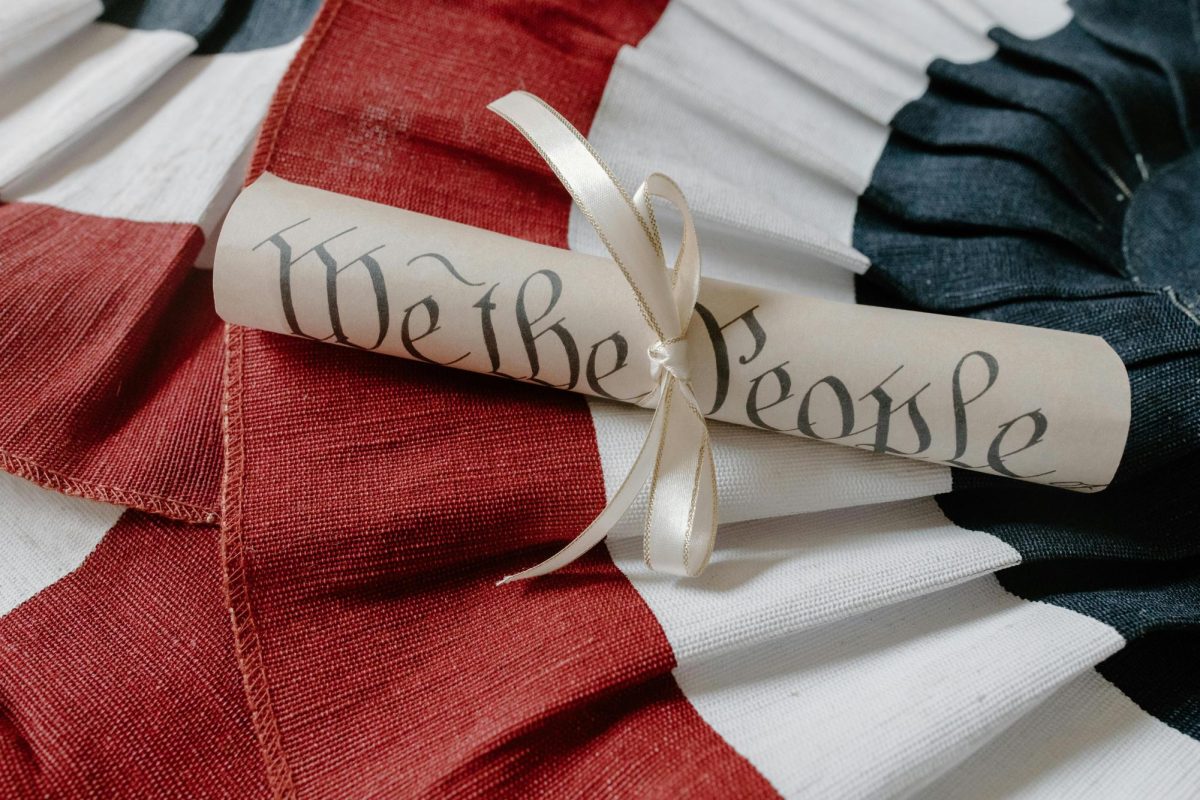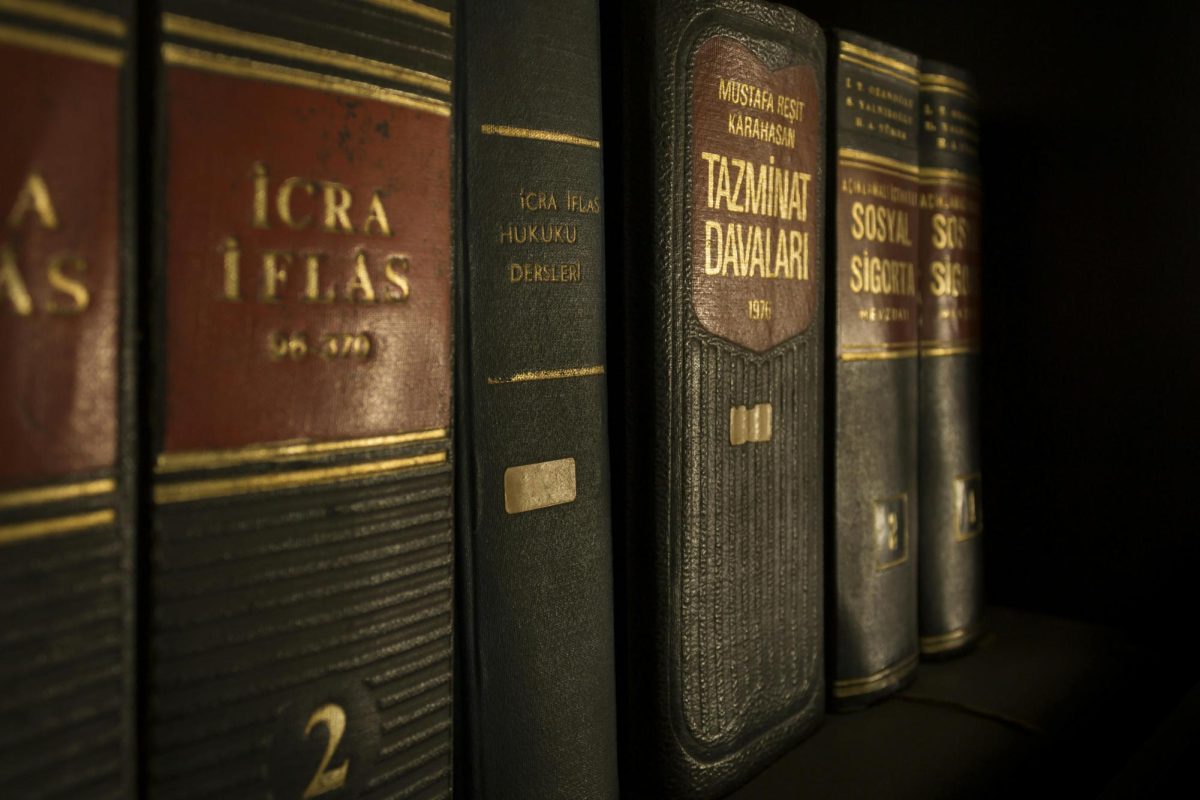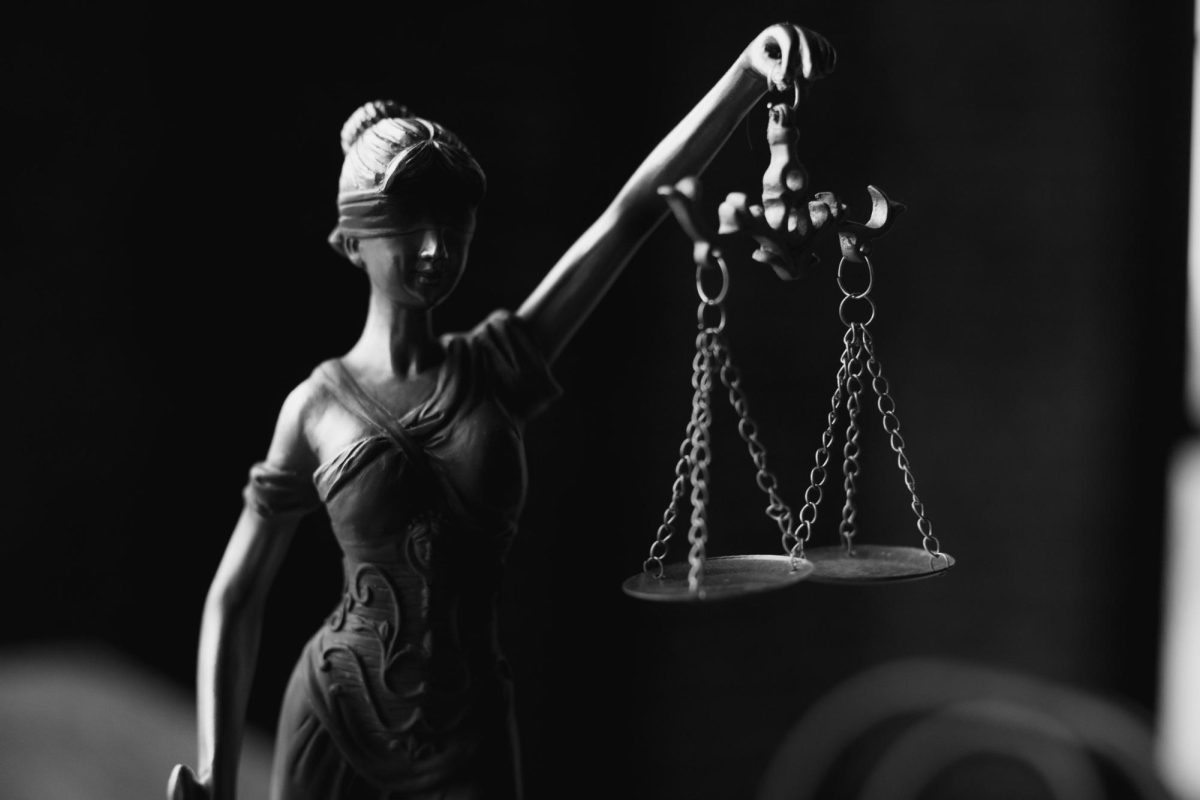Introduction
Precedent is a prior judicial decision that serves as an authority for deciding later cases, and it is a cornerstone of Anglo-American jurisprudence. The doctrine of stare decisis (the Latin word for “to stand by things decided”) holds that courts will have to adhere to prior rulings when the same points arise again. By requiring like cases to be decided alike, stare decisis promotes stability, predictability, and integrity within the legal system. The U.S. Supreme Court has explained that this doctrine “promotes the evenhanded, predictable, and consistent development of legal principles, fosters reliance on judicial decisions, and contributes to the actual and perceived integrity of the judicial process” (Kimble v. Marvel Entm’t, 576 U.S. 446, 455 (2015)).
Stare decisis is a policy of practice and not in “inexorable command.” We take, for instance, in constitutional cases, courts recognize that adherence to precedent must be weighed against correcting past errors. Over the last few centuries, jurists and scholars have debated how strictly courts should follow precedent, particularly when prior decisions conflict with foundational legal principles or evolving understandings of justice. What we’ll do is we will trace the development of precedent from its ancient and medieval origins through its role in various legal systems, with emphasis on the Anglo-American common law tradition and United States jurisprudence. We will explore how the Founding Fathers understood precedent and how precedent has evolved with the U.S Supreme Court doctrine, and how major cases have reinforced/overturned precedent. Contemporary debates will also be analyzed, such as originalism versus stare decisis, judicial activism versus restraint, and the impact of precedent on constitutional interpretation. All of these factors are grounded in scholarly commentary and primary sources. A comprehensive overview, inclusive of court opinions, historical legal texts, founding era writings, and leading scholarship, etc. will be included to support this article.
- Historical Origins of Precedent in Early Legal Systems
- Ancient and Biblical Law:
Before formalized court systems, ancient laws exhibited respect for prior practices and decisions. In the biblical traditions, adjudication often rested on established commandments and the rulings of elders or judges who created an expectation of continuity in legal judgment. If we look back at the development of Jewish Talmudic law, rigorous precedent-like rules, a later rabbinical court could not overturn the decree of an earlier court unless it was greater in wisdom and size. This principle was recorded by Maimonides and rooted in the Mishnah, which effectively bound subsequent generations to the legal interpretations of their predecessors absent extraordinary consensus to change, reflecting a deep respect for precedent in religious law. In the Greco-Roman world, early justice was often rooted in custom (mos maiorum in Rome, or the “ways of the ancestors”). The well-known Code of Hammurabi (c. 1754 BCE) in Babylonia doesn’t explicitly cite prior decisions, but the inscription aims to guide future judgments consistently. Ancient Greek city-states sometimes bound juries by ancestral laws or earlier rulings, though they lacked a formal stare decisis doctrine.
- Roman Law
When we look at classical Roman law, it is primarily a civil law system based on statutes (the jus civile) and edicts of magistrates, rather than case precedent. However, Roman jurisprudence laid out the important groundwork for concepts developed at a later time concerning precedent. Over time, the responsa (expert opinions) of esteemed jurists gained authoritative weight per se. So, by the late Empire, Emperor Valentinian III’s Law of Citations (426 CE) formally prescribed the weight of the writings of five great jurists. This would have effectively created an early system of precedent by privileging established legal opinions. However, some scholars have observed that “precedent was the very essence of Roman public life,” as republican Rome often looked to ancestral custom and prior resolutions of the Senate when confronting the legal questions they were posed with. Indeed, certain jurists’ responses under the Empire “had the character of true judicial precedents”. The Roman notion of stare decisis (Latin, “stand by the decided matter”) was not fully developed in comparison to English common law; in fact, Roman law did appreciate the value of settled expectations. By late antiquity, the adherence to earlier decisions was vigorous enough that some commentators would argue that the doctrine of stare decisis “originated with much vigor in Late Roman Law under the leadership of Valentinian”. Ultimately, Roman law’s legacy to precedent came indirectly, and this came through the codification in Justinian’s Corpus Juris Civilis (533 CE). This consolidating ruling and juristic wisdom reduced the need for a case-by-case precedent. It’s important to note that Roman legal thought influenced medieval Europe’s approach to authority and consistency within the scope of the law.
- Early English Common Law:
The English common law is known as the true cradle of the modern doctrine of precedent. After the Norman Conquest (1066), royal courts gradually unified diverse local customs into what we know as “common” law of the realm. By the 13th century, English lawyers and judges were compiling Year Books, which are annual records of legal cases and rulings that served as a reference for how similar disputes had been resolved. The authority of precedent grew through the late Middle Ages and early modern period. It was propelled by jurists like Sir Edward Coke. By the 18th century, the principle stare decisis et non quieta movere (“to stand by decisions and not disturb what is settled”) was firmly established. Sir William Blackstone, whose Commentaries on the Laws of England (1765-69) profoundly influenced the American founders, summed up the English rule: “the doctrine of the law is this: that precedents and rules be followed, unless flatly absurd or unjust; for though their reason be not obvious at first view, yet we owe such a deference to former times as not to suppose they acted wholly without consideration.” Essentially, Blackstone described precedent as a “permanent rule” that judges were bounded by, and it was not to be lightly departed from “according to any judge’s private sentiments.” This reflects the strong presumption in favor of continuity. In a sense, past judicial decisions are the default guide for future cases to promote stability in the law. So it is only when a prior decision is “manifestly absurd or unjust” should a judge consider departing from it. Those views had become orthodox in England by Blackstone’s time, which indicated that the systematic doctrine of precedent was a well-established restraint on judicial discretion.
- Influence on the American Founders:
The early American legal system inherited the English common law tradition of precedent, as we mentioned before. The thirteen colonies, before independence, had operated under received English common law (modified by local statutes), which meant colonial judges regularly cited English precedents. But after independence, many states passed reception statutes which formally adopted the common law (and its precedent doctrine) to the extent not inconsistent with republican principles. The Founding Fathers themselves were even deeply steeped in common law learning. Many of them were lawyers who had read Blackstone and Coke; they essentially understood the new American courts would “stand on the shoulders” of decided cases. For instance, John Adams, in a 1760 essay, praised the common law’s use of precedent and he wrote that by preserving every decided case in writing “and settled in a Precedent, [it] leaves nothing, or but little, to the arbitrary will or uninformed reason of Prince or Judge.” In other words, adherence to precedent was seen as a bulwark against arbitrary rule. If we look at The Federalist No. 78 (1788), Alexander Hamilton argued that the judiciary’s legitimacy hinged on faithful adherence to precedent and strict rules to avoid arbitrary discretion. Hamilton wrote: “To avoid an arbitrary discretion in the courts, it is indispensable that they should be bound down by strict rules and precedents”, noting that the records of precedents would naturally “swell to a very considerable bulk” and demand great study. This would therefore limit the judicial role to those learned in the law. This acknowledgment that was made by Alexander Hamilton underscores that the founders expected American judges to follow the common-law practice of respecting prior decisions as a check on judicial power. If we look back, early federal and state courts did, in fact, regularly cite English authorities for want of native precedent in the Republic’s infancy. While American revolutionaries rejected British sovereignty, for good reason, they did not reject the common law’s method. That is why the doctrine of precedent was, from the outset, part of U.S. jurisprudence and still is.
- Precedent in Comparative Legal Traditions
- Common Law Systems:
If we look at some common law jurisdictions (such as the United States, Canada, Australia, India, the United Kingdom, etc.) give precedent a central role. In these systems, judge-made case law is as fundamental as statutes. Courts follow binding precedent from higher courts in the judicial hierarchy (vertical stare decisis) and generally adhere to their own prior decisions (horizontal stare decisis) absent strong justification to overrule. A lower court must apply the rulings of a superior court in its jurisdiction, and typically, a high court will stand by its past decisions for the sake of legal stability. For example, an American federal trial court is bound by U.S. Supreme Court and Circuit Court precedents (vertical), and the Supreme Court usually follows its prior constitutional interpretations (horizontal) unless there is a special reason to reverse. The British legal maxim “Stand by the decision and disturb not what is settled” has guided the English courts for centuries, and modern common law courts continue to extol the virtues of evenhanded, predictable decision-making based on prior authority. It’s safe to say that common law courts have developed nuanced rules for distinguishing precedents (finding a prior case inapplicable due to factual or legal differences) and for occasionally (but not often) overruling them when necessary and applicable. The technique of writing detailed judicial opinions allows later courts to parse the ratio decidendi (core reasoning) of precedents and decipher if a new case is truly governed by the old one. Common law builds an ever-evolving tapestry of law, woven case by case, but with inclusive aspects of strong threads of continuity connecting the fabric.
- Civil Law Systems:
Civil law jurisdictions (which derived from Continental European traditions like French, German, Spanish law, etc.) traditionally do not recognize precedent as binding in the same way. These systems are built on comprehensive legal codes and statutes. So that would mean that judges are seen as interpreters of the code rather than independent lawmakers. There is a substantial difference within this system. The canonical view is that a judge’s decision applies only to that singular case, and future judges resolve disputes by applying the code or statute anew, without being bound by prior judicial interpretations. In practice, precedents do exert influence in civil law countries, albeit informally. For instance, numerous amounts of French courts value jurisprudence constante – if a series of decisions by high courts has settled an interpretation, it is generally followed for consistency. Crossing over, German and Italian courts often consider prior rulings from their highest courts as highly persuasive, even if not formally obligatory. The lack of de jure stare decisis in civil law is often tempered by respect for de facto precedent to ensure a bounded parameter of stability and uniformity. For instance, Louisiana, a U.S. state with civil law roots, embraces jurisprudence constante: a single prior decision is not binding, but a long series of consistent decisions can become authoritative and in textualism. In summary, civil law judges aim first to implement the codified law, but over time, the accumulated gloss of judicial decisions forms a body of case law that would guide future judgments, which is a convergence in function, if not in theory, with common law precedent.
- Religious and Customary Legal Systems:
Precedent also plays a role in religious courts and customary law. Let’s take, for example, Islamic law (Sharia), while the primary sources are the Quran and Hadith, centuries of juristic interpretation (fiqh) create a form of precedent within each madhhab (school of jurisprudence). Judges (qadis) would traditionally give great weight to classical jurists’ opinions. It’s a type of concept akin to precedent that is embodied in the principle of taqlid (adherence to established doctrine), wherein later scholars generally defer to earlier authorities, but that is, unless a clear error is shown within the scope of the judgment. Sharia does not have stare decisis per se, but it does have a strong tradition of continuity and adherence to earlier interpretations in practice. In Jewish law (Halakha), Talmudic rulings and rabbinic responsa form a chain of precedents. The rabbinical courts seldom overturn earlier Sanhedrin enactments unless there are some special or exceptional conditions. Said conditions must be met with a specific guideline. Canon law of the Roman Catholic Church values past papal decrees and interpretations by canonical courts, though ultimately authority rests in codified canons and magisterial pronouncements. Many customary law systems (such as various indigenous tribal laws) rely on oral precedent. This would remind us/them of the decisions of respected elders in analogous disputes, which have often guided the resolution of new conflicts. Across these diverse systems, the impulse to treat like cases alike is a basic notion of justice, and it leads to some functional equivalent of precedent, even if not formalized.
- International Law:
In international law, the doctrine of precedent is weak but not altogether absent. The International Court of Justice’s (ICJ) decisions, for example, explicitly have no binding force except between the parties and for that case (ICJ Statute, art. 59). There is not de jure stare decisis in ICJ or most international tribunals. However, in practice, prior ICJ judgments are frequently cited and followed for consistency and legitimacy. Take, for instance, article 38(1)(d) of the ICJ Statute. It essentially allows the Court to consider past judicial decisions as “subsidiary means” for determining rules of law. Similarly, the World Trade Organization’s dispute panels and appellate body have developed a de facto system of precedent. This is not formally bound, but they almost always follow prior panel interpretations to maintain a coherent trade law system. In international arbitration, prior awards and interpretations (especially in investment treaty arbitration) are routinely cited as persuasive authority. The emerging International Criminal Court also tends to respect its prior rulings for guidance and deference. Thus, although the common law notion of precedent does not formally apply in international adjudication, the desire for stability and equality of decisions means international law has an increasing precedential comity. It is often said that consistency is an aspect of the Rule of Law internationally, just as domestically. So while decisions may not necessarily be binding, they possess the ability to carry moral and intellectual weight in subsequent deliberations.
III. Precedent in the Early United States: Founding Era and 19th Century
- The Founders’ Views and Early Practice:
As discussed, American founders generally embraced stare decisis as a constraint on judicial power. There is no explicit mention of precedent in the U.S. Constitution, yet the Framers assumed its continuance as part of the “judicial power.” But early constitutional commentary reflects this. Alexander Hamilton in Federalist No. 78 stressed that the courts must abide by precedent to avoid arbitrary rulings. However, it’s to noting that there was little extensive debate on how strongly the new Supreme Court would be bound by its own prior decisions or by English precedents per se. That question was answered in practice because early Justices did cite British cases, and they continued many common-law doctrines. For example, in the very first Supreme Court reports (dating from the 1790s), we see citations to Lord Mansfield’s opinions from the King’s Bench as persuasive authority. Chief Justice John Marshall (in office 1801–1835), while a great nation-builder through bold decisions, also set a tone of respect for precedent. So, under Marshall, the Court showed a “strong preference for adhering to precedent,” albeit with a limited notion of error-correction. This is an instance in which the Court would depart from an earlier ruling if it had been undermined by subsequent legal developments or based on an outdated factual foundation. So, if a prior decision’s rationale no longer held or let’s say had been eroded by later cases, Marshall’s Court was most likely and did reconsider (for instance, United States v. Percheman, 32 U.S. 51 (1833) an earlier interpretation of treaty language when context changed; essentially a revisement is what was made. We should note that early Justices were reluctant to overrule precedents, especially if doing so would upset significant reliance interests such as property or contract rights. There we saw configurations come up.
In McCulloch v. Maryland (1819), Chief Justice Marshall invoked the importance of settled expectations in constitutional interpretation: “[A]n exposition of the constitution, deliberately established by legislative acts, on the faith of which an immense property has been advanced, ought not to be lightly disregarded.”Although McCulloch was not necessarily overruling a prior case, Marshall argued that once government institutions (like the Bank of the U.S., for instance) had been established and widely relied upon, their legal basis should be deemed settled absent a compelling reason. This sentiment mirrors stare decisis logic (protecting reliance and stability) in constitutional law.
On the other hand, the early Republic saw debate about the weight of English precedents post-Independence. Some American jurists felt that while English court decisions from before 1776 remained part of received common law, any British cases afterward had no authority except for persuasive reasoning. The Massachusetts Supreme Judicial Court in Willard v. Norwood (1784), for example, stated that English decisions could “guide” but not “bind” American courts. So by the 19th century, U.S. courts were producing their own body of reports, and reliance on domestic precedent grew accordingly. Justice Joseph Story, in his 1830s Commentaries, wrote that precedent was indispensable for judicial certainty. But even he acknowledged that an American judge might depart from an English rule if it conflicted with U.S. principles or conditions. The Founding Fathers wanted to stray away from English rule, but the aspects deemed “acceptable” could be included or manipulated to suit the American system.
- Stare Decisis in the 19th Century Supreme Court:
Throughout the 1800s, the Supreme Court built its canon of leading decisions (Marshall Court, Taney Court, etc.) and generally followed them. Overruling a case was infrequent. One instance of early overruling is The Genesee Chief (1851), where the Court overturned its prior decision denying admiralty jurisdiction on the Great Lakes, recognizing the earlier ruling (The Thomas Jefferson, 1825) as a mistaken reading of the Constitution. This showed that, when necessary, the antebellum Court would correct what it saw as clear errors, but such moves were justified at length and not undertaken lightly.
By the post-Civil War era, respect for precedent was deeply ingrained, but the Court faced new questions (railroad regulation, Reconstruction laws, etc.) sometimes requiring re-examination of old doctrines. The famous line “It is better that the law be settled than that it be settled right” became a mantra for many judges, cautioning against constant change. This maxim, originally from Justice Brandeis’s 1932 dissent but foreshadowed by 19th-century jurists, captures the conservative view that legal stability is paramount. But as we saw society changing, certain old precedents came under strain. Take, for instance, the late 19th-century Supreme Court initially upheld many states’ economic regulations (Munn v. Illinois, 1877), then shifted in the Lochner era to strike down economic laws as violating “liberty of contract.” These changes were less about overruling explicit precedent than evolving constitutional interpretation. To our knowledge, this would set the stage for open conflict over precedent in the 20th century.
In summary, the 19th-century American legal culture was built on the English tradition: precedent was generally followed out of respect for stability and the legitimacy of the judiciary. This is where judges saw themselves as constrained by earlier resolutions of law, except in the rare case of a precedent being irreconcilable with law or justice. The notion of stare decisis as a principle of judicial self-restraint took firm root in this period.
- The Role of Precedent in Major Legal Traditions and the U.S. Supreme Court
- Precedent in Anglo-American Common Law:
By the 20th century, Anglo-American courts had refined the mechanics of precedent. This is where common law identified two aspects: vertical stare decisis (a lower court must follow higher court rulings) and horizontal stare decisis (a court generally follows its own past decisions). Vertical stare decisis is strict, so, for example, all U.S. federal courts are bound by Supreme Court holdings. Horizontal stare decisis at the Supreme Court level is a bit more flexible because the Court views precedent as policy, not necessarily immutable law. It has acknowledged that it may revisit prior decisions when “special justification” exists. Still, the Court often states that it will not overrule a precedent absent a strong reason beyond mere belief that the prior case was wrongly decided. As Justice Brandeis once observed, the Court is mindful that “in most matters, it is more important that the applicable rule of law be settled than that it be settled right.” (Burnet v. Coronado Oil & Gas Co., 285 U.S. 393, 406 (1932) (Brandeis, J., dissenting)). This preference for stability means that the bar for overruling is particularly high, especially in instances where parties have relied on the existing rule.
However, the Court also recognizes that adherence to precedent is weakest in constitutional cases, because an erroneous constitutional interpretation cannot be fixed by ordinary legislation (amendment being extraordinarily difficult). The Court has explicitly noted that stare decisis is “at its weakest” in constitutional interpretation, and that if it rigidly followed precedent, “erroneous decisions like Plessy would still be the law.” Thus, the Court has to find a way to balance the values of continuity against the need to correct grave errors. But over time, it has developed a set of stare decisis factors to guide whether a precedent should stand or be overruled. Some of these include: the quality of the precedent’s reasoning, its flow of consistency with related decisions, some changed facts or law since the decision has its workability in practice, and the extent of reliance interests at stake. We will see these factors applied in the examples below.
- Precedent in Civil Law and Other Traditions (Recap):
In civil law jurisdictions, where codes are predominant, the doctrine of precedent, as in common law, is formally rejected. Nonetheless, a high court’s consistent interpretations become de facto rules. For instance, the French Cour de cassation decisions, while officially not deemed law, may guide lower courts to avoid reversal. In Germany, the Bundesgerichtshof (Federal Court of Justice) and Bundesverfassungsgericht (Constitutional Court) enjoy an enormous persuasive authority. This is where lower courts seldom deviate from their rulings. If we can recall previously, in Islamic law, the weight of centuries of juristic precedent is embodied in doctrines of consensus (ijma) and analogical reasoning (qiyas), which bind future jurists unless there’s a strong reason to chart a new path that can be shown. Internationally, precedent’s persuasive pull is growing as global jurisprudence accumulates. This comparative perspective highlights that the Anglo-American system’s distinctive contribution was not the idea of following previous wisdom per se (which is ubiquitous), but rather a more formalized, hierarchical, binding precedent doctrine that can trump contrary statutes (when interpreting common law) and even prior societal practices.
- U.S. Supreme Court’s Stare Decisis Doctrine (Modern Era):
In the 20th and 21st centuries, the Supreme Court has articulated its stare decisis approach in many cases. It often repeats that “stare decisis is not an inexorable command” and especially not solely absolute in constitutional matters. The Court stated in Payne v. Tennessee (1991) that stare decisis is a policy of “principled and intelligible” decision-making that fosters stability, but it will not be applied to uphold “a clearly wrong decision” indefinitely. In Arizona v. Rumsey (1984), the Court said departing from precedent requires a “special justification” beyond mere disagreement. More recently, in Janus v. AFSCME (2018), the Court phrased it as requiring “strong grounds” to overrule. The Justices have also distinguished between statutory precedents and constitutional precedents. Statutory interpretation precedents could be given enhanced stare decisis effect simply because Congress can correct the Court’s mistakes by legislation, whereas constitutional precedents are more freely reconsidered. After all, the Court is the final arbiter absent a constitutional amendment. In a sense, as a result, the Court has overruled constitutional decisions more often than statutory ones. An example is Kimble v. Marvel (2015), where the Court refused to overrule a statutory precedent (on patent licensing) largely because Congress could change the rule if it saw fit, calling this “superpowered form of stare decisis” for statutes. By contrast, in constitutional cases like Agostini v. Felton (1997), the Court expressly overruled earlier doctrine on state aid to religion, noting that strict adherence is less justified where its interpretation of the Constitution is involved.
In weighing whether to overturn a precedent, the Court considers factors illustrated in Planned Parenthood v. Casey(1992) and subsequent cases. Some of these key factors would include:
- Quality of Reasoning: Was the prior decision well-reasoned or was it egregiously wrong? The Court is, in a sense, particularly more apt to discard a precedent if the original rationale was weak. For example, West Virginia Bd. of Educ. v. Barnette (1943) overruled Minersville School Dist. v. Gobitis (1940) after only 3 years because the Court found Gobitis’s reasoning on compelled flag salutes to be fundamentally misguided on First Amendment principles. Barnette had famously declared that the overruling of said precedent was necessary because the prior analysis failed to grasp the “fixed star in our constitutional constellation” of individual freedom of thought.
- Workability: Is the precedent’s rule or standard practically unworkable or confusing? If lower courts cannot consistently apply it, that weighs in favor of overruling. An example is Garcia v. San Antonio Metro Transit (1985) overruling National League of Cities v. Usery (1976); the Court found Usery’s attempt to distinguish “traditional” state functions (immune from federal regulation) proved unworkable and incoherent in practice. Similarly, Montejo v. Louisiana (2009) discarded an earlier rule on police interrogation after finding it too hard to apply.
- Consistency with Related Law: Has the precedent been eroded by later developments? If subsequent decisions have undermined the old rule’s doctrinal foundations, the Court may potentially reverse course, given what is at face value. For instance, Lawrence v. Texas (2003) noted that Bowers v. Hardwick (1986), which upheld a ban on same-sex intimacy, was out of step with a line of later cases on privacy and autonomy (like Planned Parenthood v. Casey and Romer v. Evans) and with evolving societal values, supporting its overruling of Bowers. Conversely, if a precedent is a recent “outlier” deviating from an established pattern, it may be overruled to restore coherence (as in Adarand Constructors v. Peña (1995) overruling Metro Broadcasting (1990) to reaffirm consistency in Equal Protection doctrine).
- Changed Facts or Understanding: Have factual conditions or our understanding of facts changed such that the old rule no longer makes sense? The Court in Casey asked whether “facts have so changed, or come to be seen so differently, as to have robbed the old rule of significant application or justification.” A crisp example is Brown v. Board of Education (1954), which relied in part on modern psychological knowledge about the harms of segregation to depart from Plessy’s premise that “separate” could be “equal.” More recently, South Dakota v. Wayfair (2018) overturned precedents that barred states from taxing out-of-state internet retailers, noting that the explosive growth of e-commerce had made the old rule (from 1967/1992 cases in a mail-order era) anachronistic. Similarly, West Coast Hotel v. Parrish (1937) noted “the economic conditions which have supervened” (the Great Depression) in rejecting the Lochner-era ban on minimum wage laws.
- Reliance Interests: Would overruling cause such an undue hardship because people have relied on the existing rule in ordering their affairs? If yes, that adds weight to retaining the precedent. For instance, property and contract decisions are said to be at the “acme” of stare decisis because undoing them could unsettle vast financial and legal expectations. In Payne v. Tennessee (1991), it was observed that reliance is highest in cases involving property or contract rights and lowest in cases involving procedural or evidentiary rules. The Court in Dickerson v. United States (2000) refused to overrule Miranda v. Arizona (1966) simply in part because Miranda’s warning had become a bedrock in our cultural expectation of policing. To quote, it is“embedded in routine police practice to the point where the warnings have become part of our national culture.” In contrast, in Dobbs v. Jackson Women’s Health Org. (2022), the majority downplayed traditional reliance in the context of abortion rights (noting that reproductive planning is not a commercial or property reliance in the usual sense), whereas the dissent argued that millions of women had indeed relied on Roe/Casey for their life decisions. In some aspect, reliance can thus be framed either narrowly or broadly. Additionally, the Court considers reliance by legislatures or other public actors. So, for example, the late great Justice Scalia warned that many laws were passed assuming Bowers was good law, a point he raised in his dissent in Lawrence (arguing against sudden reversal). Courts and agencies have relied on precedents to guide judicial review and administration. Overruling a longstanding precedent can “dislodge settled rights” and undermine the trust that like cases will yield certain outcomes alike to what was established prior.
In applying most of these factors, various Justices’ respective of judicial interpretation may weigh them differently. That can explain why stare decisis outcomes are often split along ideological lines. The Court has admitted that deciding when to adhere to a precedent “requires a delicate balance”of these considerations, and reasonable jurists can disagree on whether a past decision’s costs now outweigh its benefits.
- Precedent in Action: Key U.S. Supreme Court Turning Points
To illustrate how precedent evolves, this section will review major Supreme Court cases in which the Court either reinforced prior precedent or overturned it, reshaping the law.
- Racial Segregation – Plessy to Brown:
This is by far the most famous reversal of precedent is Brown v. Board of Education, 347 U.S. 483 (1954), which overturned Plessy v. Ferguson, 163 U.S. 537 (1896). In Plessy, the Court, by a 7-1 vote (surprised at the majority), had upheld Louisiana’s segregated “separate but equal” train cars, reasoning that the 14th Amendment was not intended to abolish distinctions based on race and that segregated facilities were constitutional if equal in quality. That dark and daunting precedent stood for 58 years, entrenching Jim Crow segregation across the South. However, by the early 1950s, the Court under Chief Justice Earl Warren confronted the obvious failure of Plessy’s doctrine: segregated schools for Black children were markedly unequal, and the very separation stamped a badge of inferiority. In Brown, the Court unanimously held that state-mandated segregation in public schools violates the equal protection clause of the Constitution. Chief Justice Warren Burger’s opinion declared: “We conclude that, in the field of public education, the doctrine of ‘separate but equal’ has no place. Separate educational facilities are inherently unequal.” The Court explicitly rejected the Plessy doctrine as it applied to education, stating that any language in Plessy contrary to Brown’s holding was thereby overruled. Although Brown itself was limited to schools, its textual logic unraveled segregation across all areas. The Court did not dwell in Brown on stare decisis factors, but implicitly it found Plessy’s reasoning morally and factually bankrupt (quality of reasoning factor) and noted new psychological knowledge about the harms of segregation (changed facts/understanding). Additionally, by 1954, there had been substantial reliance interests in Plessy (states and localities had built segregated systems), yet the Court determined that those systemic reliance interests must yield to fundamental constitutional rights. Chief Justice Warren had believed rightfully so that the legitimacy of the judiciary would have been tarnished if they clung to do so egregious an injustice. Brown stands as a testament that stare decisis will not shield precedents that egregiously violate constitutional principles of equality. Indeed, the majority in Dobbs later cited Brown as a model example where overruling precedent was not only justified but required. Overturning Plessy is now seen as one of the Court’s finest hours, even though it was a dramatic example of necessary and applicable judicial activism in its day (rejecting a long-standing precedent and social practice). It underscores that correcting a constitutional wrong can outweigh even long-settled practice. Brown’s example has ever since served as a rejoinder to arguments that precedent alone should decide,“If we never overruled precedent, Plessy would still be the law.”
- Economic Liberty – Lochner to West Coast Hotel:
Early in the 20th century, the Supreme Court recognized a broad “liberty of contract” under the Due Process Clause, famously in Lochner v. New York, 198 U.S. 45 (1905), which struck down a law limiting working hours. Lochner was not overturned by just one sudden decision, but rather eroded and then explicitly discarded. After Lochner, the Court for at least three decades, would quite often invalidate labor and economic regulations (e.g., minimum wage laws in Adkins v. Children’s Hospital, 261 U.S. 525 (1923), and Morehead v. New York, 298 U.S. 587 (1936)). This line of precedent encountered a crisis during the Great Depression, when social and economic realities made laissez-faire jurisprudence untenable. In 1937, the Court changed course in West Coast Hotel Co. v. Parrish, 300 U.S. 379 (1937), upholding a Washington State minimum wage law for women and explicitly overruling Adkins. Chief Justice Hughes’ opinion noted that “the economic conditions which have supervened” demanded a fresh look at the constitutionality of wage-and-hour regulations. West Coast Hotel effectively ended the Lochner era; this would signal that freedom of contract was not absolute as one would like to believe on its contextual basis, but in that it would be/is a type of social legislation that would get judicial deference. The Court acknowledged that Adkins (and by implication Lochner) rested on a premise (that such laws were necessarily a due process violation) that was no longer persuasive. The factor of changed facts (the Depression’s harsh realities about worker bargaining power) and the ever-evolving understanding of the Constitution’s reachability to the matter played a pivotal role. By 1937, President Roosevelt’s Court-packing pressure loomed, raising institutional considerations: this is where we saw that the Court’s legitimacy was at stake if it continued to block popular New Deal measures. After West Coast Hotel, a series of precedents that had invalidated labor laws were either expressly overruled or effectively abandoned. For example, in West Coast Hotel, which had explicitly overruled Adkins as well as overturned Lochner and Coppage v. Kansas (striking anti-union laws) by implication. In United States v. Carolene Products (1938), the new stance that economic regulations are presumed constitutional (the famous Footnote 4 signaled a shift to focus on protecting discrete rights and minorities instead). Here we see stare decisis yielded to a practical understanding that precedent must bend when it stands in the way of necessary government functions and widely accepted norms.
- Criminal Procedure and Individual Rights – Miranda and Others:
Another instructive and should be well known case by many is Miranda v. Arizona, 384 U.S. 436 (1966), which required police to give warnings to suspects. Olivia Benson says this in Law and Order: SVU for reference. Taking that into account, this was initially controversial, and over the years, some Justices sought to limit or overrule Miranda. Notably, in 2000, in Dickerson v. United States, 530 U.S. 428, the Rehnquist Court (with the Chief Justice, who had been a Miranda critic, writing for the majority) upheld Miranda’s core holding despite a federal law that attempted to overrule it. The Court had then invoked stare decisis strongly: Miranda had become “embedded in routine police practice” and part of national culture. Even though some Justices still thought Miranda went beyond the Constitution’s text, they preserved it largely due to reliance and the fact that police and courts had worked with it for three decades. Dickerson is an example of the Court reinforcing precedent. Similarly, Planned Parenthood v. Casey (1992), mentioned above and discussed in detail below, reaffirmed the “essential holding” of Roe v. Wade on stare decisis grounds, illustrating when the Court chooses continuity over change.
- Abortion Rights – Roe, Casey, and Dobbs:
One of the most debated and extremely debated lines of precedent in U.S. history is that involving abortion rights. In Roe v. Wade, 410 U.S. 113 (1973), the Supreme Court held that the Due Process Clause’s protection of liberty includes a woman’s qualified right to terminate a pregnancy, at least before fetal viability. Roe was a 7-2 decision establishing a trimester framework balancing this right against state interests. It represented a significant development of the substantive due process doctrine, building on precedents that recognized privacy in contraception (Griswold v. Connecticut, 1965) and other family matters. For two decades, Roe stood as precedent, but time and time again, it was subject to intense criticism and repeated efforts to overturn or limit it. In 1992, the Court directly confronted Roe in Planned Parenthood of Southeastern Pennsylvania v. Casey, 505 U.S. 833 (1992). The Casey case was a watershed for stare decisis: this was a joint plurality opinion by Justices O’Connor, Kennedy, and Souter who explicitly framed the question as to whether Roe’s central holding should be preserved under principles of precedent. After reviewing Roe’s reasoning and the societal reliance on the availability of abortion, the Casey plurality reaffirmed what it called the “essential holding” of Roe. It stated that a woman has a right to choose abortion before viability without undue interference. The Justices openly acknowledged Roe might be seen as initially controversial, but they argued that overruling it in 1992 under political pressure would do grievous damage to the Court’s legitimacy. In stirring language, they wrote: “A decision to overrule Roe’s essential holding under the existing circumstances would…<br>…address error, if error there was, at the cost of both profound and unnecessary damage to the Court’s legitimacy, and to the Nation’s commitment to the rule of law.” Therefore, they said, “it is imperative to adhere to the essence of Roe’s original decision.”Casey thus stands as a modern testament to the force of stare decisis in preserving a controversial precedent. The plurality weighed the traditional factors: Roe’s core was not unworkable (they adjusted the framework slightly, replacing the trimester scheme with an “undue burden” test), factual underpinnings had not fundamentally changed (women’s role in society had, if anything, grown contingent on reproductive control and this effectively bolstered Roe’s rationale), and critically, people had come to rely on the availability of abortion in planning their lives and familial decisions. The plurality stated that for the Court to overturn Roe under fire would be perceived as yielding to political pressure, thus undermining the Court’s role as a principled, independent arbiter. Casey’s eloquent defense of precedent included the famous assertion: “Liberty finds no refuge in a jurisprudence of doubt.” This means that the rule of law requires stability in defining fundamental liberties. At the same time, Casey did modify Roe (permitting more state regulation pre-viability as long as not an “undue burden”), illustrating that adherence to precedent can be nuanced (keeping the core but adjusting the doctrine’s periphery).
Fast forward 30 years: in Dobbs v. Jackson Women’s Health Organization, 597 U.S. ___, 142 S. Ct. 2228 (2022), the Court (by a 5-4 majority) did what Casey explicitly refused to do, which was to overturn Roe and Casey entirely. Justice Alito’s majority opinion in Dobbs concluded that Roe was “egregiously wrong from the start” and that none of the stare decisis factors counseled retaining it. The Dobbs majority argued that Roe’s reasoning was exceptionally weak (they critiqued its historical analysis, among other things), that Roe and Casey caused harmful consequences (polarizing debate, tying the Court to unworkable standards like viability), and that any societal reliance on Roe was intangible or policy-based rather than the kind of concrete reliance precedent usually protects. The opinion also repeated that stare decisis is weakest for constitutional decisions. In a key passage, Dobbs asserted: “Stare decisis…is not an inexorable command… [It] is at its weakest when we interpret the Constitution… An erroneous constitutional decision can be fixed only by our change or by amendment, and our Constitution is notoriously hard to amend. Therefore, in appropriate circumstances, we must be willing to reconsider and, if necessary, overrule constitutional decisions.”The Dobbs Court listed several landmark overrulings (including Brown, West Coast Hotel, and Barnette, discussed above) as admirable examples of the Court correcting past errors despite stare decisis. They pointedly mentioned that if the Court had stuck to precedent, “the infamous decision in Plessy…would still be the law.”By invoking these examples, Dobbs framed the overruling of Roe as a righteous restoration of constitutional principle, not partisan activism as it may be perceived. The dissent in Dobbs, conversely, castigated the majority for betraying stare decisis and the Court’s rightful institutional integrity. They noted that Roe/Casey had been reaffirmed for decades and that millions of women had come to rely on those decisions for their bodily autonomy and equal status. The Dobbs dissent warned that abandoning such a long-standing precedent for essentially ideological reasons risked undermining the rule of law and public confidence in the Court. This clash in Dobbs between the majority and the dissent underscores the modern debate: how to balance correction of what one side views as “demonstrably erroneous precedent” against the other side’s view of “the judicial legitimacy costs” of discarding precedent. Dobbs is thus a capstone example for studying stare decisis: it shows that ultimately the Supreme Court’s commitment to precedent can, under determined enough forces (changes in the Court’s composition, shifting jurisprudential philosophies), give way, even on deeply rooted rights. It also illustrates the dialogic nature of precedent: Roe begat Casey (reaffirmation), which begat Dobbs (reversal), and now new legal and political chapters unfold as a result.
- Other Notable Examples: A few additional illustrations: Lawrence v. Texas (2003) expressly overruled Bowers v. Hardwick (1986), expanding privacy rights for LGBTQ persons, because Bowers was deemed a misjudgment and out of line with later values. Lawrence stressed that Bowers had been eroded by subsequent doctrine and that few had relied on it except states wishing to enforce moral disapproval. In contrast, Citizens United v. FEC, 558 U.S. 310 (2010) overruled Austin v. Michigan Chamber of Commerce (1990) and part of McConnell v. FEC (2003), expanding First Amendment rights of corporations in elections. The court (5-4) argued that Austin’s restriction on corporate independent expenditures was a departure from general First Amendment principles and had proven unworkable in drawing consistent lines. The dissent viewed this as an unjustified jettisoning of precedent, accusing the majority of judicial activism favoring powerful interests. In Janus v. AFSCME, 585 U.S. ___ (2018), the Court overruled Abood v. Detroit Bd. of Ed. (1977), which ended mandatory agency fees for public-sector unions, reasoning that Abood was poorly reasoned and inconsistent with First Amendment protections for non-union members. The dissent argued that reliance (labor contracts built on Abood) was ignored. On the other hand, stare decisis has sometimes led a more judicially conservative Court to retain precedents it dislikes: e.g., Texas v. Johnson (1989) protecting flag-burning was effectively reaffirmed in United States v. Eichman (1990) despite public outcry, and Justice Scalia, though personally against that result, honored it as precedent. Kelo v. City of New London (2005) on eminent domain remained precedent despite controversy, and efforts to overrule it in court have not succeeded (though many states have adopted the aspect to simply change their laws in response). These episodes reflect that the decision to follow or overturn precedent is often on a case-by-case, specific basis, weighing jurisprudential convictions against institutional prudence.
- Modern Debates Surrounding Precedent
- Originalism vs. Stare Decisis:
One of the foremost jurisprudential debates today is how an originalist approach to constitutional interpretation coexists with stare decisis. Originalism posits that the Constitution’s meaning was fixed at ratification and should guide decisions. While not entirel uniform, it can clash with precedents that deviated from the original meaning. Committed originalists argue that if a prior decision contradicts the Constitution’s original understanding, it ought to be overturned. Otherwise, the Court would be perpetuating an unconstitutional rule. Justice Clarence Thomas, for example, has openly written that stare decisis should not override the duty to correct “demonstrably erroneous” interpretations of the Constitution. In Gamble v. United States (2019), Justice Thomas concurred specifically to critique modern stare decisis, suggesting that adherence to precedent is a policy preference, not a binding rule, and that historically the judiciary did not treat prior decisions as unassailable when contrary to law. He and some scholars (like Michael Stokes Paulsen) maintain that the Constitution’s text and original intent are supreme, and longstanding but erroneous precedents (sometimes called “anti-constitution” precedents) should be overturned despite reliance interests. It’s a statement applicable to a multitude of cases but not every case. The Constitution’s original meaning of “We the people” did not include black people (due to slavery), women (whose rights were not developed or heard until few decades ago) and many other classes within society who were not part of said inscription “We the people.” On the other hand, moderate originalists like the late Justice Antonin Scalia accepted some role for precedent, terming himself a “faint-hearted originalist” who would not unleash chaos by uprooting all settled case law. Justice Scalia noted that stare decisis is a pragmatic exception to pure originalism, justified because the rule of law values continuity; he famously quipped, “I am an originalist, not a nut”, explaining he wouldn’t seek to reverse every decision inconsistent with 1789 understanding (for instance, he accepted New Deal commerce clause cases as water under the bridge). Justice Brett Kavanaugh, in Ramos v. Louisiana (2020), acknowledged that while precedent is important, “the Court’s current approach to stare decisis contemplates that a well-reasoned, wrong decision can still be overruled when various factors weigh in favor of doing so.”The intellectual tension is whether upholding a precedent that misinterprets the Constitution is an abdication of a judge’s oath to the Constitution itself. Some originalists have argued that giving priority to precedent effectively amends the Constitution by judicial fiat, whereas others reply that a stable rule of law is also part of the constitutional design (pointing to Federalist 78’s emphasis on precedent, for example). This debate remains lively, especially after Dobbs: critics of Dobbs see it as originalism run amok, discarding 49 years of settled law, while supporters see it as a rightful restoration of the original constitutional balance.
One compromise theory is “constitutional originalism with stare decisis” which allows certain deeply embedded precedents (sometimes called “super precedents”) to remain, even if inconsistent with original meaning, because society has come to accept them as fundamental. Candidates often cited as “super-precedents” are Brown v. Board, Marbury v. Madison (1803, establishing judicial review), Carolene Products, etc., which no one seeks to overturn despite originalist critiques that might be leveled. But what qualifies and who decides is contested.
- Judicial Activism vs. Restraint:
Precedent is also central to the debate over judicial activism versus judicial restraint. Judicial restraint is the philosophy that courts should generally defer to the political branches and stick closely to established precedent. The course should only be altered when necessary. By following precedent, judges exercise restraint because they limit personal discretion and avoid disrupting settled expectations. Take, for example, an instance where a restrained judge might uphold a law (even if they dislike it) because precedent does not forbid it, and they might refuse to recognize a new right without clear grounding in text or past cases. Stare decisis is a restraint tool: it “restrains judicial hubris and reminds us to respect the judgment of those who grappled with important questions in the past” (to quote then-Judge Gorsuch). On the other hand, judicial activism refers to courts readily invalidating legislative acts or reversing precedent to advance what the judge perceives as correct policy or principle. An activist court is more willing to discard past decisions to update the law, which can be seen as progress or overreach depending on perspective. Critics often label Brown, Roe, or Lawrence as “activist” in that they broke with prior law (though now Brown is almost sacrosanct). Similarly, the Warren Court in the 1960s was considered activist for liberal causes (expanding rights of defendants, reapportionment, etc., frequently overruling prior precedents like Plessy or Betts v. Brady on right to counsel). The Rehnquist and Roberts Courts have been called activist for conservative causes by overturning precedents like Bowers, Austin, Abood, Roe/Casey, etc. The paradox is that both following precedents too rigidly and overturning precedents too easily can incur charges of judicial misbehavior: the former risks perpetuating injustice (judicial abdication), while the latter risks the courts acting as unelected policymakers (judicial usurpation). The ideal of restraint counsels that courts overrule precedent only when the need is clear and the benefit (restoring law to its proper trajectory) outweighs the damage to stability and the court’s reputation. For instance, Chief Justice Roberts often speaks of narrow rulings and incremental change; in Citizens United (2010), he wrote a concurrence emphasizing that overruling precedent is sometimes required, but the Court must “consider the fundamental principles of judicial decision making” and approach it with humility. In practice, whether a decision is activism or restraint can be subjective. Some supporters of a change see it as correcting an error (thus a form of higher fidelity to law, not activism), whereas some opponents see it as unnecessary disruption.
- Precedent and Constitutional Interpretation:
The role of precedent in interpreting the Constitution raises numerous profound questions: Should the Constitution’s meaning evolve through precedent (“living constitutionalism”), or remain fixed with precedent merely applying original meaning? U.S. constitutional law has largely evolved via precedent. Many doctrines (e.g., incorporation of the Bill of Rights, the right to privacy, separation-of-powers standards) are not spelled out in the text but are products of iterative judicial decisions. This creates a somewhat common law Constitution whose body of case law functions as the operative Constitution for courts and society. Proponents of a living Constitution argue that societal change and contemporary values rightly inform judicial interpretations. This is with precedent being the vehicle that carries forward those evolutions. From that perspective, overruling a line of precedent that embodies societal progress (like overruling Roe in Dobbs) can be seen as reactionary and destabilizing. But on the other hand, originalists and textualists worry that an accumulation of precedents can effectively amend the Constitution without democratic consent, and they cite examples of discredited precedent (e.g., Dred Scott v. Sandford (1857) upholding slavery, Plessy upholding segregation) as cautionary tales of “precedent gone wrong.” The balancing act is visible in cases like Knox v. SEIU(2012), where the Court had refused to extend deference to a recent precedent on union fees and signaled an openness to revisiting it, versus Sturgeon v. Frost (2019) in which the Court unanimously stuck to the statutory text and its original interpretative analysis despite some contrary lower court precedent.
Another dimension is precedent about precedent. The Court’s statements over time about how it treats stare decisis become a meta-precedent. Take, for example, Casey’s articulation that the Court’s legitimacy is bound up with not yielding to political pressure; this has itself been cited in subsequent cases as a principle. Conversely, Dobbs’s detailed critique of Casey’s analysis and its new framing of stare decisis factors now stands as a bit of guidance for future courts. The Harvard Law Review has noted a “paradox of precedent about precedent” in which the Court is not even strictly bound by its previous descriptions of stare decisis doctrine, since those too can change with new decisions. This means that each new major ruling on whether to uphold or overrule can recalibrate the stare decisis standard itself.
Finally, the impact of precedent on constitutional interpretation is evident in the concept of what’s called “constitutional culture. “Over time, certain precedents become so woven into the nation’s understanding of the Constitution that they have effectively become part of it. In Marbury v. Madison (1803), it establishes judicial review, which is not textually explicit in the Constitution, but it is an unquestioned precedent that defines the judiciary’s role. Brown v. Board is another case in which a serious voice calls for a return to Plessy, so Brown is considered permanently settled (even those who argue against a “living Constitution” concede Brown is now part of the constitutional fabric under the Equal Protection Clause). Scholars sometimes label such cases “super-precedents” or “constitutional cornerstones.” The danger, others caution, is complacency. That is, deeming some precedents beyond a reasonable doubt might short-circuit searching analysis if those precedents were wrongly reasoned. For example, many conservative philosophical ideologies view Wickard v. Filburn (1942, broad reading of the Commerce Clause) as wrongly decided but effectively immune to overruling due to its reliance and integration into law. Debaters have continued whether, let’s say, Slaughter-House Cases (1873, narrowing Privileges or Immunities Clause) should be overturned by originalists despite their long-standing nature; this could revive what some may see as the 14th Amendment’s original meaning. Some Justices, like the late Justice John Paul Stevens, argued that fidelity to a sensible line of precedent is often more important than fidelity to a possibly unknowable original intent, because the former is what people count on in real life.
In the current Supreme Court, with an ideology on the conservative side for the majority, we see an increased willingness to reconsider past decisions across various domains (religion, administrative law, affirmative action, etc.). Each time, the Court faces fierce amicus briefs and arguments about the sanctity or error of precedent. The shadow of Dobbs looms: will other long-standing precedents (e.g., on contraception, marriage equality) be at risk? The majority in Dobbs said those cases were distinct, but Justice Thomas explicitly wrote that the Court should reconsider all substantive due process precedents (e.g., Griswold, Lawrence, Obergefell), considering Dobbs’ reasoning. That pronouncement has fueled political debate and legal speculation about the extent of stare decisis’s protective reach going forward. Cases cited by Justice Thomas, in my view, need no revisitation due to the sanctity within those cases being embedded in U.S. culture; to revert to such cases would transcribe into judicial activism and thus, the legitimacy of the court is further undermined and perishes. Heeding some issues back to states to decide can set the stage for established precedent to be challenged strategically and allow states to enter a judicial Hunger Games.
Congress and state legislatures sometimes embed precedent into statutes (for example, after Ledbetter v. Goodyear Tire (2007) limited pay discrimination claims, Congress passed a law that effectively overrode that precedent). Thus, precedent is not only a judicial concern, but it can prompt democratic responses.
VII. Conclusion
The concept of precedent with respect to the past decisions of courts has stood as a pillar of the Anglo-American legal system and a key point of comparison with other legal traditions. Historically, this has emerged from practical needs: fairness, consistency, and efficiency in dispute resolution. The English common law elevated precedent to doctrine; the American founders wove it into the fabric of the new Republic’s judiciary, hoping to yoke judicial power to the mast of accumulated wisdom. With centuries passing by, precedent has proven to be both an anchor and a sail: an anchor grounding the law in continuity, and at times a sail catching the winds of change when courts adjust course. Some great moments in legal history include Brown, Barnette, and West Coast Hotel. These cases demonstrate to us how the Supreme Court consciously breaks from precedent to affirm constitutional principles of liberty and equality, often vindicating minority rights against majority practices. Some other notable moments are Casey, Dickerson, and Miranda, which show the Court standing firm on precedent to safeguard the stability of the law and the legitimacy of the institution. The ongoing debates of originalism vs. stare decisis and activism vs. restraint are essentially dialogues about how we should honor the past while doing justice in the present. Precedent should be seen as the heart of that dialectic.
In the American system, stare decisis remains a “principle of policy” which is a presumption in favor of continuity, rather than an inexorable command. The Supreme Court has both the power to entrench rights by reaffirming precedents and the power to upend the law by overturning them. Each exercise of that power is a high-stakes event for the rule of law. As Justice Frankfurter once cautioned, the Court should “not lightly overrule precedent” because doing so too easily “invites the popular misconception that this institution is little different from the two political branches of the Government.” But at the same time, the Court’s greatest contributions have often involved correcting grave errors despite longstanding precedent, proving to us that adherence to precedent is a means, not an end. The American legal system has and always will strive to balance fidelity to the past with faithfulness to the Constitution’s enduring values. As new issues are arising and old doctrines are being tested, this sort of intrinsic and dynamic equilibrium ensures that the law, though rooted in precedent, is never petrified. It must evolve sometimes glacially through the incremental accretion of decisions and the occasional tectonic shift when the Supreme Court redraws the lines, or as some would put it, makes a huge leap. The essence of precedent possesses the ability to function as both a check and a balance of the rule of law. Precedent links each generation’s jurisprudence to the next, creating a continuous, if sometimes contentious, narrative of the rule of law in American history.
References
William Blackstone, Commentaries on the Laws of England, vol. 1 (1765) – discussing the binding nature of precedent barring “flatly absurd or unjust” outcomes.studocu.comstudocu.com.
The Federalist No. 78 (Alexander Hamilton, 1788) – emphasizing that judges must be “bound down by strict rules and precedents” to avoid arbitrary discretion.avalon.law.yale.eduavalon.law.yale.edu.
John Adams, Novanglus Essays (1760 entry in diary) – praising the common law’s practice of preserving cases as precedents to restrain judges’ whims.constitution.congress.govconstitution.congress.gov.
Historical Background on Stare Decisis, Constitution Annotated (Congressional Research Service, 2019) – tracing stare decisis to English common law and the Framers’ understanding.constitution.congress.govconstitution.congress.gov.
Stare Decisis Doctrine & Factors, Constitution Annotated (2019) – summarizing modern Supreme Court precedent on precedent, including factors like reasoning quality, workability, reliance, etc.constitution.congress.govconstitution.congress.gov.
Payne v. Tennessee, 501 U.S. 808 (1991) – discussing heightened stare decisis in property/contract cases and the Court’s willingness to re-examine constitutional interpretations.constitution.congress.govconstitution.congress.gov.
Planned Parenthood v. Casey, 505 U.S. 833 (1992) (plurality op.) – reaffirming Roe on principles of stare decisis and institutional legitimacy.law.cornell.edulaw.cornell.edu.
Dobbs v. Jackson Women’s Health Org., 142 S. Ct. 2228 (2022) – overruling Roe/Casey; majority op. on why stare decisis did not save those precedents.supremecourt.govsupremecourt.gov.
Brown v. Board of Education, 347 U.S. 483 (1954) – overruling Plessy’s “separate but equal” doctrine as unconstitutional in public education.supreme.justia.comsupreme.justia.com.
West Coast Hotel Co. v. Parrish, 300 U.S. 379 (1937) – overruling Adkins and ending Lochner era, noting changed economic conditions (Great Depression).constitution.congress.govconstitution.congress.gov.
Lawrence v. Texas, 539 U.S. 558 (2003) – overruling Bowers v. Hardwick in light of evolving doctrine on privacy and autonomy.constitution.congress.govconstitution.congress.gov.
Neil Gorsuch, A Republic, If You Can Keep It (2019) – reflections on the role of precedent as “wisdom of the past” and the need for judicial humility.supremecourt.gov.
Common Law and Civil Law Traditions, University of California at Berkeley (2010) – overview of differences between common law precedent and civil law reliance on codes. https://www.law.berkeley.edu/wp-content/uploads/2017/11/CommonLawCivilLawTraditions.pdf
Peace Palace Library Guide on the ICJ (2021) – noting Article 59 of ICJ Statute and the non-binding nature of ICJ precedents, yet acknowledging the Court considers its prior decisions for guidance. peacepalacelibrary.nlpeacepalacelibrary.nl.
Precedent in Past and Present Legal Systems, 44 Mich. L. Rev. 955 (1946) (Sumner Lobingier) – historical survey noting late Roman law’s influence on the concept of stare decisis (Law of Citations under Valentinian III).studocu.comstudocu.com.
James Madison, Letter to C.E. Haynes (1831) – conceding that exceptional cases may justify departure from precedent, though they “must justify themselves” by their obvious necessity.constitution.congress.gov.
Richard H. Fallon, “Stare Decisis and the Constitution,” 76 N.Y.U. L. Rev. 570 (2001) – scholarly analysis of whether the Constitution permits or requires following precedent, cited in Constitution Annotated.constitution.congress.govconstitution.congress.gov.
Michael Stokes Paulsen, “Does the Supreme Court’s Current Doctrine of Stare Decisis Require Adherence to Itself?” 86 N.C. L. Rev. 1165 (2008) – provocative critique of inconsistencies in the Court’s use of stare decisis.constitution.congress.govconstitution.congress.gov.
American Bar Association, “Understanding Stare Decisis” (2020) – explainer on how stare decisis works and recent controversies (e.g., suggesting Roe was not protected by stare decisis in Dobbs).reuters.comreuters.com.
Cornell Law School’s Legal Information Institute (LII) – definitions of precedent and stare decisis in Wex dictionary.law.cornell.edulaw.cornell.edu, plus discussion of horizontal vs. vertical stare decisis





















